#asian tapir
Explore tagged Tumblr posts
Text
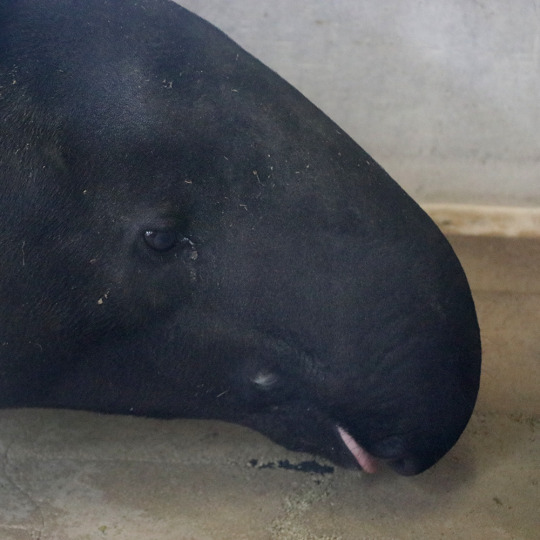
なぜか舌が出ていた
@日本平動物園
The tapir, for some reason, was sleeping with its tongue out.
@Nihondaira Zoo
95 notes
·
View notes
Text
Happy #WorldTapirDay! These paintings of an adult & juvenile Malayan Tapir (Tapirus indicus) are 2 of the 477 watercolors of flora & fauna by Chinese artists commissioned by William Farquhar when he was the Resident of Malacca from 1803-18, now in the National Museum of Singapore.
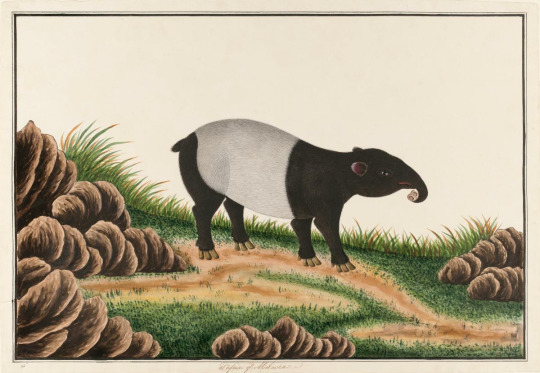
Tapir of Malacca William Farquhar Collection of Natural History Drawings Malacca, Malaysia watercolour on paper 37.6 x 54.1 cm (Image) / 58 x 44 cm (Mount) National Museum of Singapore Accession No. 1995-02885
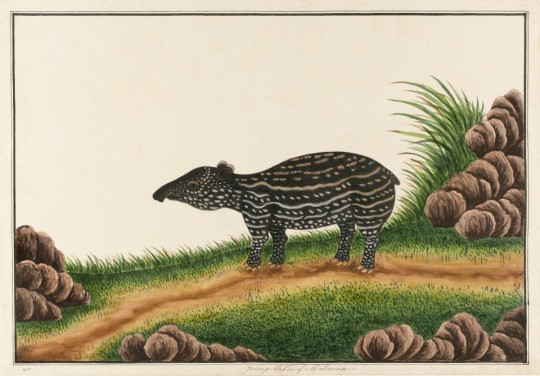
Young Tapir of Malacca William Farquhar Collection of Natural History Drawings Malacca, Malaysia watercolour on paper 38 x 54.2 cm (Image) / 58 x 44 cm (Mount) National Museum of Singapore Accession No. 1995-02884
#animals in art#World Tapir Day#tapir#Malayan Tapir#Asian Tapir#Asian art#19th century art#William Farquhar#National Museum of Singapore#natural history art#scientific illustration#zoological illustration#illustration#works on paper
246 notes
·
View notes
Text

Malayan Tapirs 5-6-23
Hell is a place where you have to draw a tapir’s head at ¾ view.
I didn’t end up drawing any baby tapirs, but it's important for you all to know they have markings like a watermelon.
#tapir#malayan tapir#asian tapir#conservation#wildlife conservation#endangered species#endangered animals#biology#zoology#sketch#art study#digital art#digital illustration#digital sketch#perissodactyl
95 notes
·
View notes
Photo
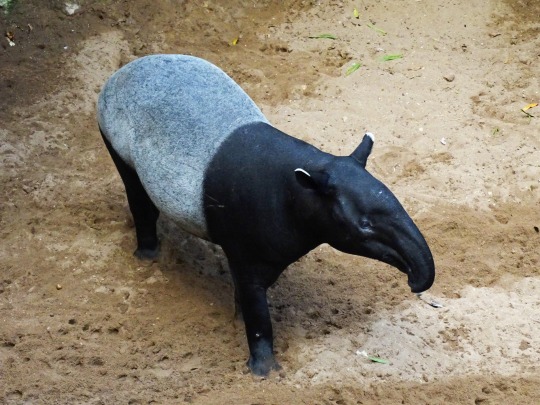
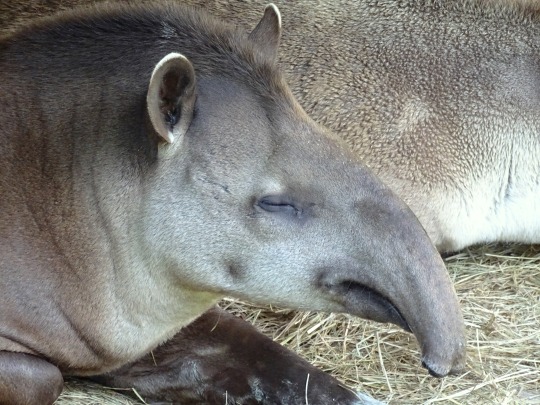
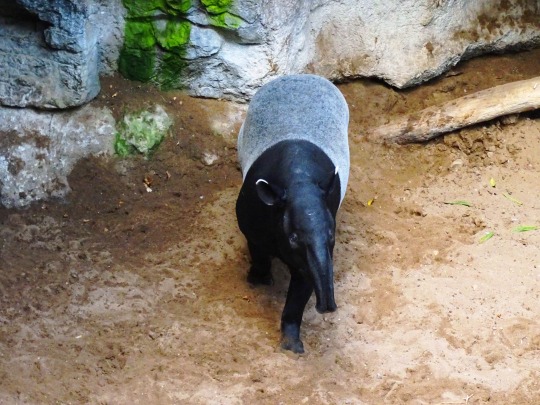
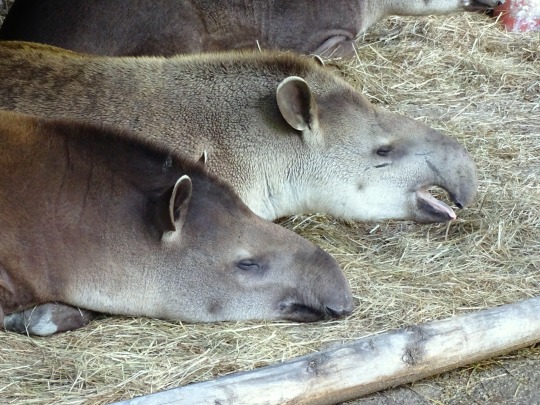

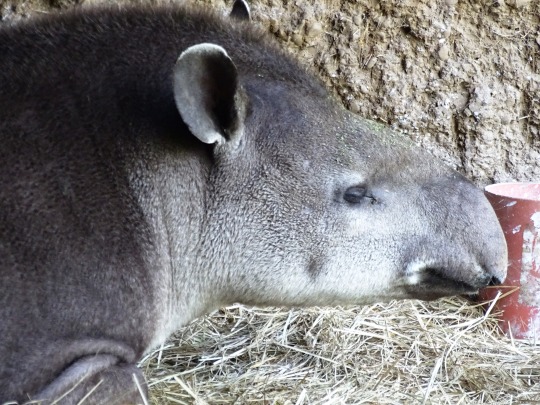
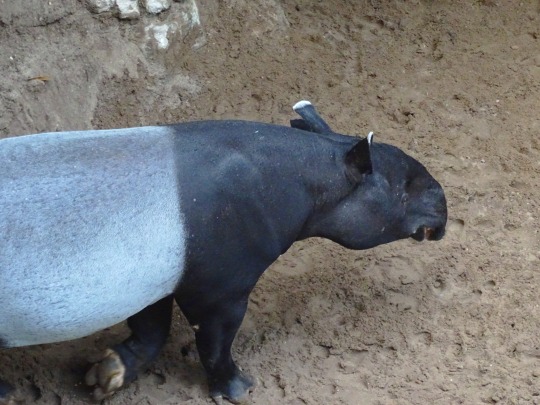

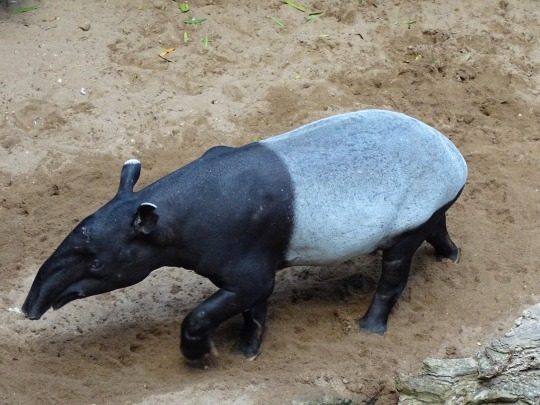
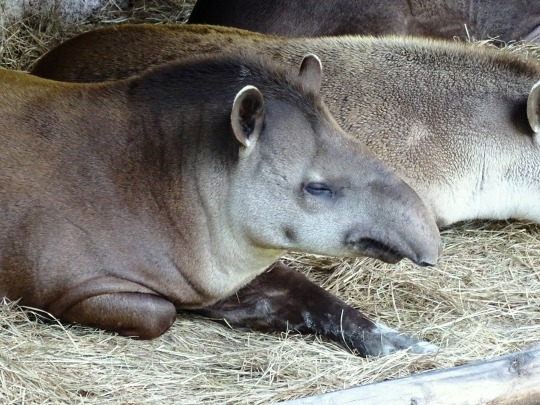
World Tapir Day
There’s an odd little creature that’s a native of Central and South America, and can even be found in SE Asia. What kind of odd critter? Well, it looks a bit like a pig, with it’s general build and toes with hooves, but it also looks a bit, just a little, like an elephant with its long snout! What are we talking about? The Tapir! This wonderful animal is currently on the watch-list as it has been over-hunted for its meat and hides. World Tapir Day raises awareness about these endangered animals and helps to protect them for future generations.
History of World Tapir Day
World Tapir Day was established with the intent of protecting all the members of this endangered species from extinction, that they might still be here for our children. The areas they inhabit are either forest or jungle, which makes them particularly vulnerable to deforestation, especially as large herbivores. But the dangers of their extinction goes even further than just the loss of another unique species, the loss of the Tapir could in fact endanger the entire remaining forests. As part of their natural habits, they also serve to disperse seeds throughout the jungle, and are one of the oldest species found in these areas.
Many people are unaware of the Tapir as a species, meaning they are losing a special part of the world without ever knowing they exist. So unknown are these animals that those who visit Zoos that frequently mistake them for members of another species. This is even a problem in those areas where they live natively, so World Tapir Day was established to help raise world awareness of this species.
How to celebrate World Tapir Day
Celebrating World Tapir Day can be as simple as picking up a book or searching the internet for information on the species and familiarizing yourself with the role it plays in its home environment. If you feel like taking another step in celebrating World Tapir Day, then you can go out and help to raise awareness by organizing events at your local school or in your community.
You can also look into your local community zoo and determine whether or not they have a Tapir exhibit, and if they do you can help to raise awareness of their presence their and encourage people to visit the zoo and learn more about them! You can also send money to organizations that work to protect the jungles that the Tapirs call home.
Source
#Malayan tapir#Asian tapir#Oriental tapir#piebald tapir#black-and-white tapir#Bronx Zoo#my favorite zoo#original photography#South American tapir#Brazilian tapir#maned tapir#lowland tapir#Zoo Zürich#Zurich#Schweiz#Switzerland#animal#summer 2018#spring 2017#tourist attraction#landmark#outdoors#World Tapir Day#27 April#WorldTapirDay#travel#vacation#day trip
4 notes
·
View notes
Text
Anyways i didnt rb the post or its rebuttle but no way ppl on here and twitter were sharing the 'moo dengs zoo is bad and unfit for animals because uhh there is a wild monkey problem' abt a thai zoo. Im going to write my report on why the cincinatti zoo has a rodent problem (squirrels)
#like. i agree that there should be a further distance from the crowd and i hope the huge influx of guests helps fund that. but like i can#head to the zoo rn and there are animals within touching distance#i remember going to a zoo in england as a kid and petting the tapirs through the fence its not an 'asians dont care abt animals' problem lol
4 notes
·
View notes
Text
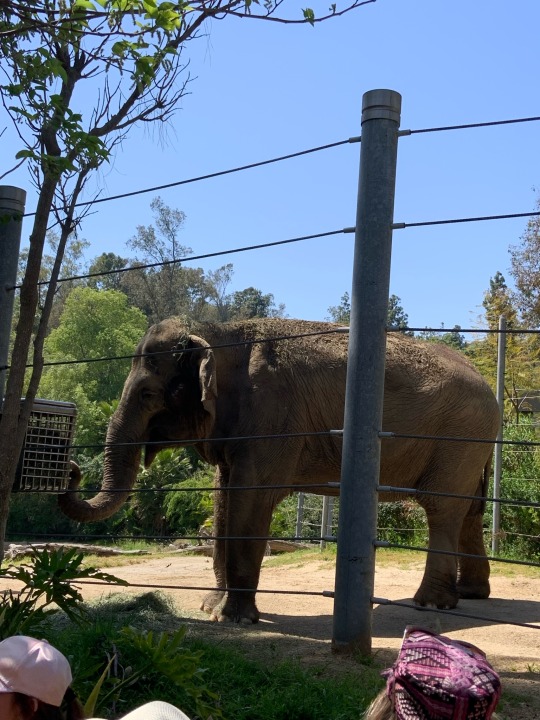
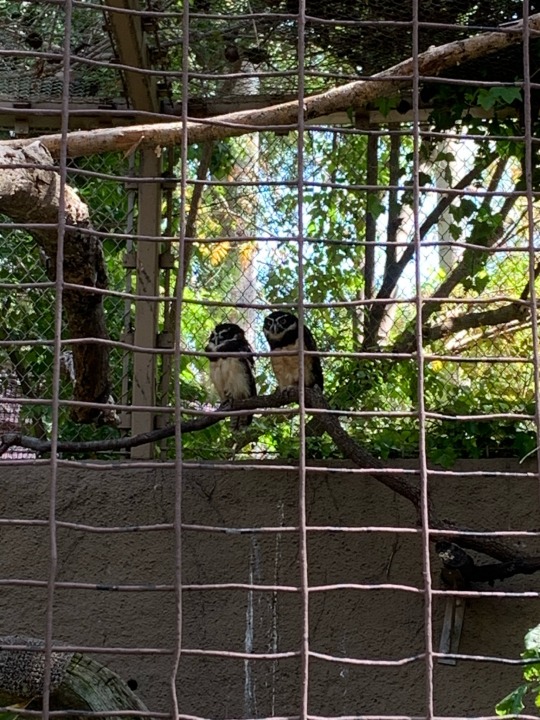
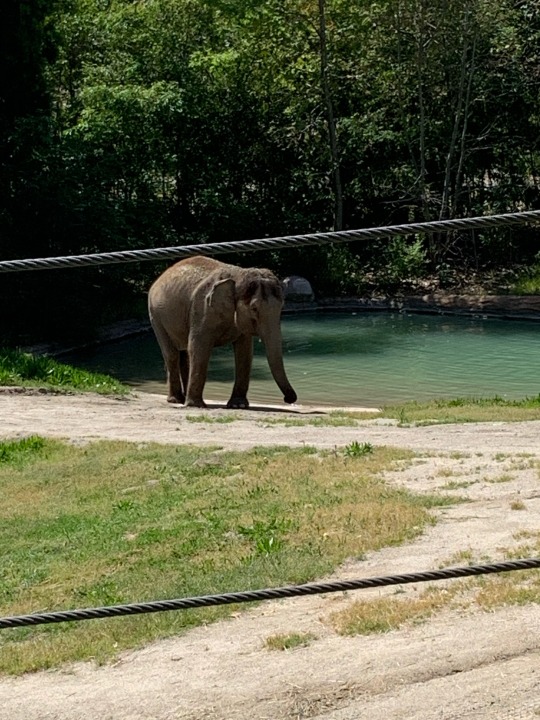
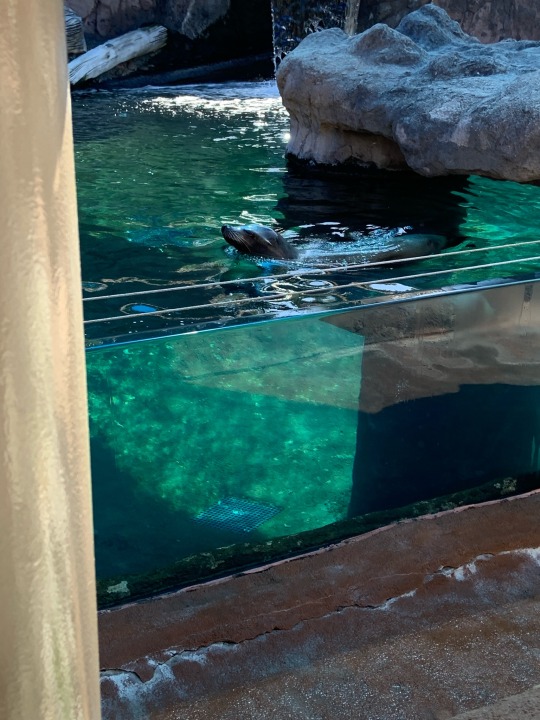
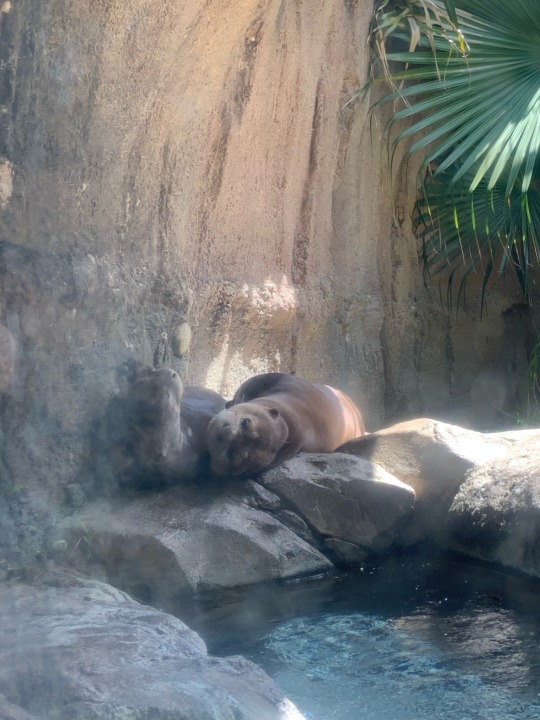
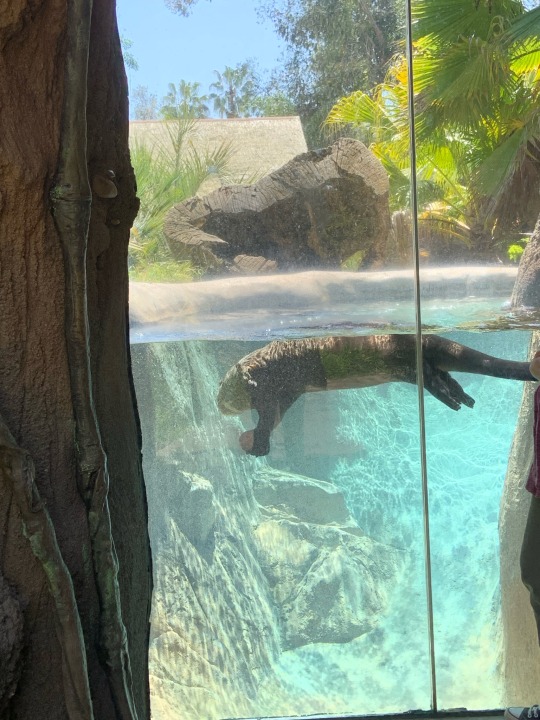
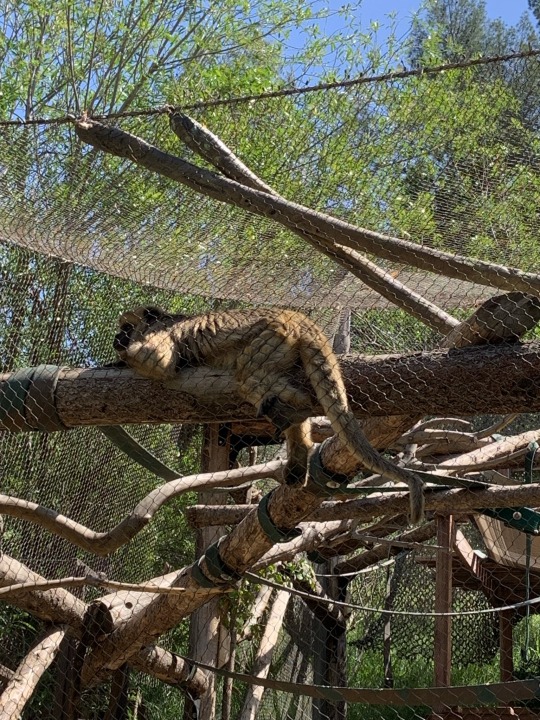
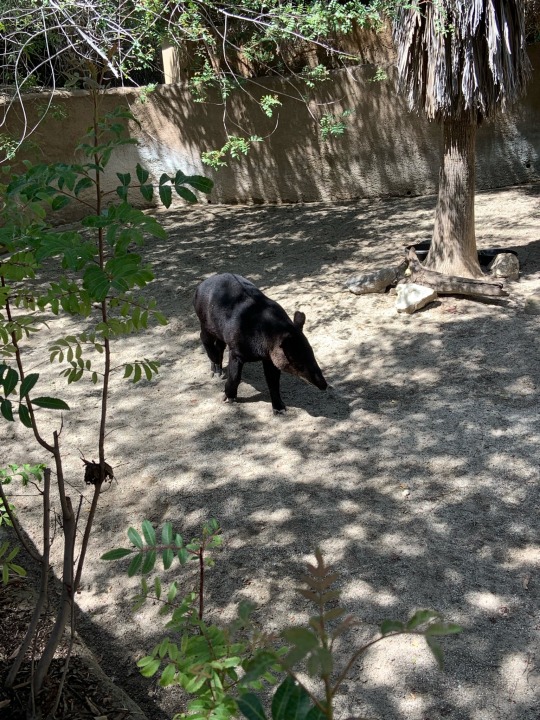
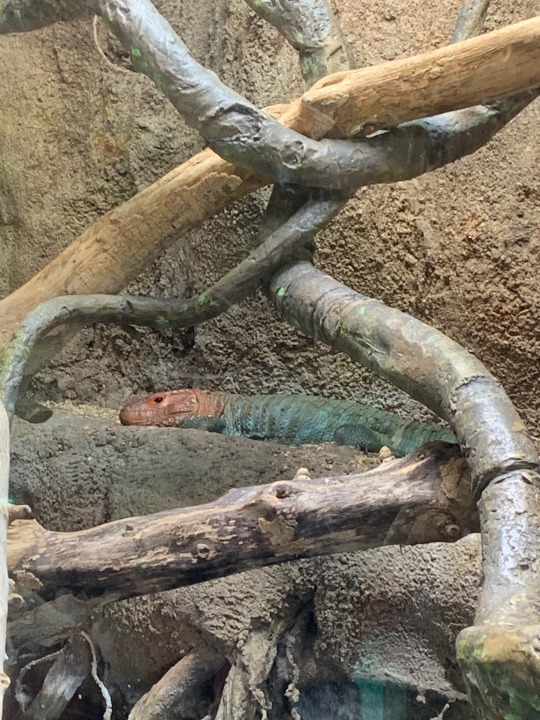
sorry to let down my beautiful mutuals….. no bears…. couldn’t find the giraffes…. 😞 there were a lot of monkeys though :)
#top row: african and asian elephants and spectacles owls#middle row: seal (dunno what type 😞) and giant river otters#bottom row: mystery monkey tapir and caiman lizard
13 notes
·
View notes
Text
In the last 20 million years Australia’s rainforests have changed considerably. Although still dominated by marsupials it is home to a large variety of placentals.
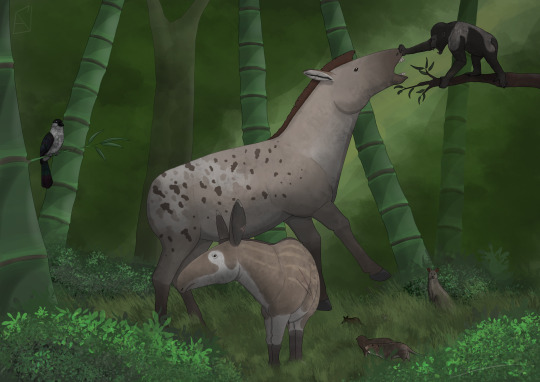
The largest and most noticeable across the forests are the donkeys, now diverse enough to be classified as a subfamily (Asininae), which have managed to colonise these environments on two different occasions:
The first ones were a lineage (tribe Macrocephalippini) that became incresingly more specialised in browsing the lower leaves of trees, growing to larger and larger sizes in order to digest more vegetation more efficiently. The group is not too diverse, with only a couple giants in a single genus (Macrocephalippus), while most of the taxa are pretty basal forest donkeys distributed among two other genera. The larger ones are quite similar behaviourally to Grévy’s zebras, with males establishing territories where females and their foals forage, although it’s not rare for foals of other stallions to disappear. The smaller species are generally solitary or form small herds with only a handful of members.
The second group were a lineage (tribe Tapironini) of grazers that developed shorter legs and a more flexible snouts (like pigs and tapirs) in order to better look through the leaf litter for good forage or to select the right plants in the rare and small grazing grounds in the forest. They are more diverse than the previous group, with almost ten species in it. They’re solitary and tend to avoid each other, as they’re quite nomadic too.
Another quite common group are a lineage of the old endemic rodents that developed an increasingly herbivorous diet, converging with voles and cavies in build and head musculature. They’re quite common on the forest ground, as much as bandicoots, with whom they avoid competition thanks to their more specialised diet. They’re quite skittish animals that forms small “herds” with only a handful of individuals, sometimes as small as two members. They breed year round and sows can give birth to up to six pups, although this many are rare as they’re much more K-selected than other rodents.
The latest arrival to the Australian continent are the two primate lineage that rafted there in the late Catiocene, as Australia gets closer and closer to Asia, impacting as it goes more and more Australasian islands. It is now closest to Wallacea where these two groups come from.

The earliest to arrive were tarsiers. Not too different from their Asian relatives they still hunt insects and other invertebrates in the canopy, with the only difference being a wider variety of colourations.
The latest were macaques, but even though they’ve reached the continent extremely recently they’ve managed to establish a foothold, with ape-like forms being visible all across the Northern Territory and Queensland’s canopies. They’re quite aggressive animals, employing a strategy similar to honey badgers by picking fights with animals clearly out of their weight category and not letting attackers escape unscathed, in order to discourage predation. They live in large mixed sex troops with clear and complex hierarchies, with makes and females in two different ones. Individuals higher on the social scale are the first to have access to resources and mates, and in order to stay at the top of the hierarchy they frequently bully less dominant individuals (tipically of the same gender). Infants inherit their mother’s social status but can climb the social ladder by challenging more dominant individuals, although males tend to do so more often as even the least dominant females still get “courted” when ovulating and and are able to forage thanks to their sisters’ help, something males don’t usually don’t rely on.
#spec bio#spec evo#speculative biology#speculative evolution#artwork#digital art#future earth#future evolution#worldbuilding#epigene period
28 notes
·
View notes
Text


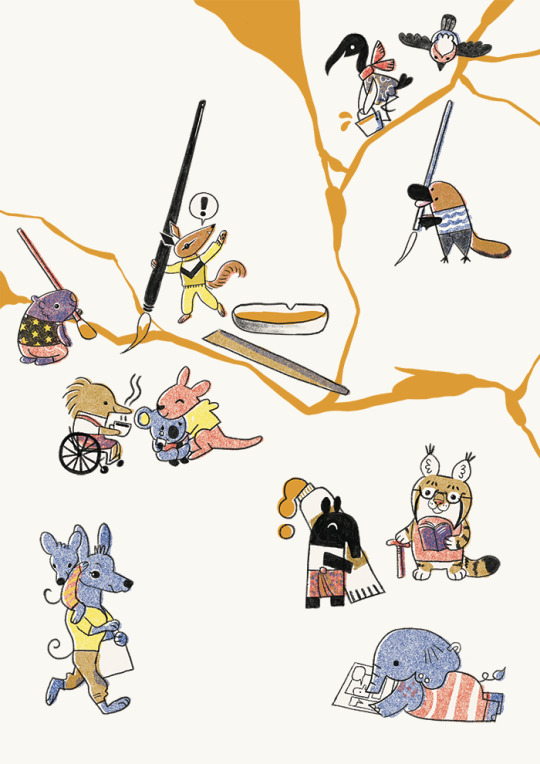
The official poster and other illustrated assets for this year's Perth Comic Arts Festival, an independent artist-led festival in Perth, Australia.
I am thrilled to be illustrating for one of my favourite comics festivals in the world!! This year's theme is "Mistakes" and how mistakes can teach you in your practice. I interpreted the theme visually through the philosophy and aesthetics of kintsugi (the art of repairing broken ceramics) and wabi-sabi - both are centered around integrating flaws as part of beauty and art-making - as well as risography and print offsetting.
These animals are mostly Aussie natives, with a few that gesture at the overseas diaspora that make up PCAF's committee and participating artists. (The tapir represents Southeast Asians aka me :3)
86 notes
·
View notes
Text
The Total Drama Characters if they are animals.
I’m doing a update to my animal au list, just for things
Hosts:
Chris McLean- Weasel
Chef Hatchet - Alligator
Blaineley - Fennec Fox
Josh - Labrador retriever
Don - Golden Eagle
Island/Action/World Tour Contestants:
Ezekiel: Opossum
Eva: Honey Badger
Noah: Aardwolf
Justin: Peacock
Katie: Meerkat
Tyler: Border Collie
Izzy: Red Panda
Cody: Mouse
Beth: Quinea Pig
Sadie: Chinchilla
Courtney: Jackal
Harold: Canadian Goose
Trent: Silver Fox
Bridgette: River Otter
Lindsay: English Cocker Spaniel
DJ: Deer
Geoff: Sea Lion
Leshawna: Brazilian Toucan
Duncan: Grey Wolf
Heather: Snow Leopard
Gwen: Corsac Fox
Owen: Panda
Sierra: Striped Skunk
Alejandro: Jaguar
Revenge Of The Island Contestants
Staci: Parrot
B: Elephant
Dawn: Owl
Sam: Sloth Bear
Brick: German Shepherd
Anne-Maria: Black Panther
Dakota: Flamingo
Mike: Mash Deer
Jo: Spotted Hyena
Scott: Red Fox
Zoey: Gazelle
Lightning: Zebra
Cameron: Rabbit
Pahktiew Island Contestants
Beardo: Bison
Leonard: Pangolin
Amy: Saluki
Samey: Saluki
Rodney: Moose
Ella: Squirrel
Topher: Black Footed Ferret
Dave: Abyssinian Cat
Scarlett: Rat
Max: Mole
Jasmine: Kangaroo
Sugar: Pig
Shawn: Amardillo
Sky: Cheetah
The Ridonculous Race contestants
Tammy - Tapir
Gerry - Cobra
Pete - Rattlesnake
Ellody: Mongoose
Mary: Beaver
Laurie: Alpaca
Miles: Goat
Jen: Ring Necked Parakeet
Tom: Hyacinth Macaw
Kelly: Mink
Taylor: Mink
Mickey: Chipmunk
Jay: Chipmunk
Lorenzo: Tazmanian Devil
Chet: Warthog
Rock: Striped Hyena
Spud: Sloth
Dwayne: Lion
Junior: Lion cub
Crimson: Hawk
Ennui: Vulture
Stephanie: Asian Rhinoceros
Ryan: African Rhinoceros
Carrie: Sheep
Devin: Dhole
Emma: Siamese cat
Kitty: Siamese cat
Jacques: Husky
Josee: Lyxn
Brody: Harbor Seal
Sanders: Doberman Pincher
MacArthur: Pitbull
Total Drama Island (2023) contestants
Caleb: Horse
Axel: Wolverine
Nichelle: Tiger
“Scary Girl” Lauren: Fruit Bat
Damien: Bat eared Fox
MK: Raccoon
Wayne: Reindeer
Raj: Emperor Penguin
Ripper: Spotted Skunk
Zee: Giraffe
Chase: Coyote
Emma: Tabby Cat
Julia: Swan
Millie: Hippopotamus
Bowie: Crane
Priya: Indian Peafowl/Peahen
I just hope I do some fanart for their designs and maybe redraws too.
#total drama#total drama island#total drama revenge of the island#total drama pahkitew island#the ridonculous race#total drama reboot#total drama island 2023#headcanon#animals#animal AU#my ideas#writing#my writing
29 notes
·
View notes
Note
Silly Game Time: ASIAN ANIMAL TIME! Use a random letter generator, then look up Asian animals that start with that letter. What's one of them? Post a picture of it!
Tapir!!!!

#image credit: google 😭#I love these guys sm#I've pet one before hehehehehe#thanks for the ask!!!#asks
9 notes
·
View notes
Photo
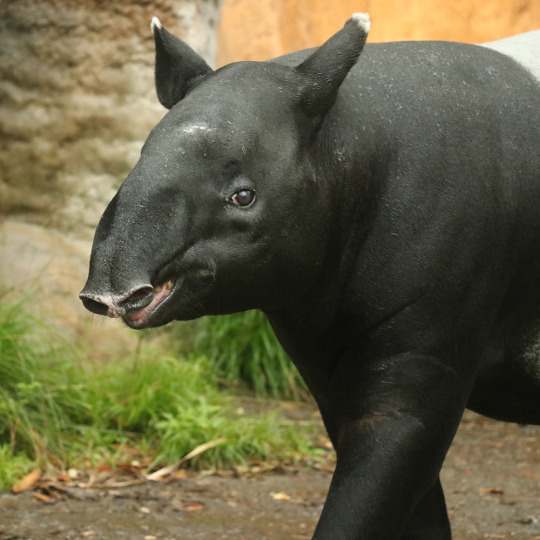
目がすごい綺麗
まだ一歳3ヶ月の位のオスです
@ズーラシア
His eyes are beautiful!
He was born 15 month ago.
@Zoorasia
51 notes
·
View notes
Text
For #WorldTapirDay :

Lawrence Lebduska (American, 1894 - 1966)
Two Tapirs Grazing, n.d.
oil on masonite, 39 X 44 cm (15 3/8 x 17 3/8 in.)
🆔 Malayan Tapir (Tapirus indicus), the only tapir native to Asia and the only black-and-white tapir.
#animals in art#animal holiday#20th century art#tapir#Malayan Tapir#Asian Tapir#tapirs#World Tapir Day#painting#oil painting#pair#Lawrence Lebduska#American art#modern art
11 notes
·
View notes
Text
THE COMPETITORS
After hours of filtering, I have a list! From 411 submisstions to 134 competitors. Of course, that means that not all the submissions are competing. My main rule for filtering was that when many similar animals were submitted, one was selected. This means that even if your submission din't get in, there is likely somthing else similar you can vote for instead! I'm hoping to get the polls out this Saturday or Sunday, and I'll post the time once it's decided. That being said... here's the list!
Mouse deer
Blanket octopus
Twenty plume moth
Anomalocaris
Caecilian
Bagworm moth caterpillars
Balaenognathus
Banded archerfish
Barnacle
Barreleye fish
Tripod fish
Bigfin squid
Bilby
Black sea hare
Black snub nosed monkey
Blobfish
Blue sea dragon
Nano-chameleon
Bush brown caterpillar
Chinese water deer
Maned wolf
Colugo
Common spotted cuscus
Corpse Assassin Bug
Messmate pipefish
Cotylorhynchus
creatonotos gangis
Tongue eating louse
Ganges river dolphin
ghost pipefish
Giant Anteater
Giant gippsland earthworm
Giant tube worm
Giraffe Weevil
Glowworms
Goblin shark
Golden mole
Green-banded broodsac
Greenland shark
Gum leaf skeletonizer caterpillars
Hagfish
Hallucigenia
Hammer head bat
Helicoprion
Honduran white bat
Short horned lizard
Green hydra
Jerboa
Jerusalem cricket
Lamprey
Largetooth sawfish
Bulwer’s pheasant
Lowland Streaked Tenrec
Lyrebird
Marbled polecat
Mata mata
Mexican mole lizard
Ghost faced bat
Mudskipper
Muntjac
Naked bulldog bat
Naked mole rat
Phillipene tube nosed fruit bat
Oarfish
Mantis shrimp
Ogre faced spider
Okapi
platypus
Pangolin
Parrot fish
Partridge bug
Pelican eel
Asian giant softshell turtle
Pink fairy armadillo
Pipa pipa
Platybelodon
Portuguese Man O War
Potoos
Predatory tunicate
Pufferfish
Sea spider
Red lipped batfish
Bowmouth guitarfish
Roseate spoonbill
Pink iguana
Royal albatross
Sage grouse
Saiga antelope
Sailfin dragon
Volcano snail
Schaefer’s anglerfish
Sea cucumber
Sea pig
Sea sheep
Sharovipteryx
Echidna
Assassin spider
Spider tailed viper
Siphonophore
Solenodon
Spectral bat
Spix’s disc winged bat
Spotted wobbegong
Stalk-eyed fly
Stoplight loosejaw
Giant phantom jelly
Sunfish
Sword billed hummingbird
Tailless whip scorpion
Tapir
Tardigrade
Tarsier
Telescopefish
Woodcock
Aye-aye
Bobbit worm
Nautilus
Glass frog
Immortal jellyfish
Olm
Mirror spider
Trilobite Beetle
Trumpetfish
Vampire bat
Vampire squid
Velvetworm
Wonderfish
Wrinkle-faced bat
97 notes
·
View notes
Text


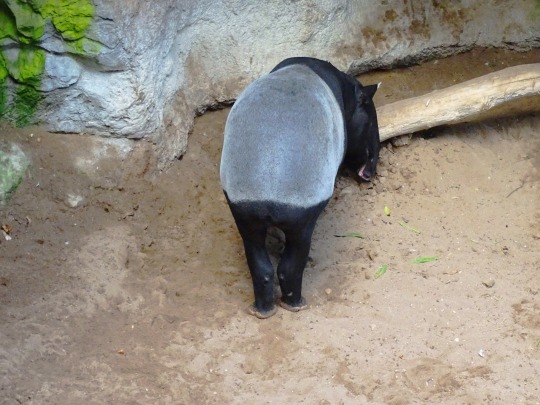


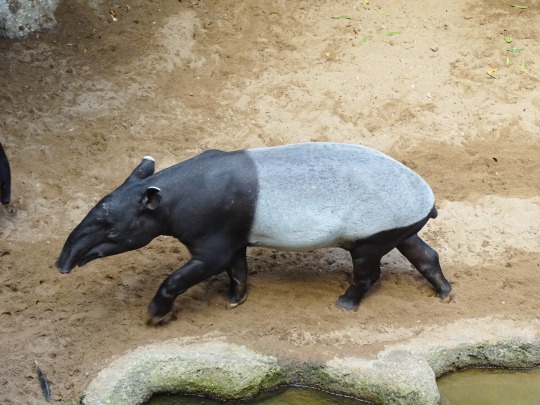


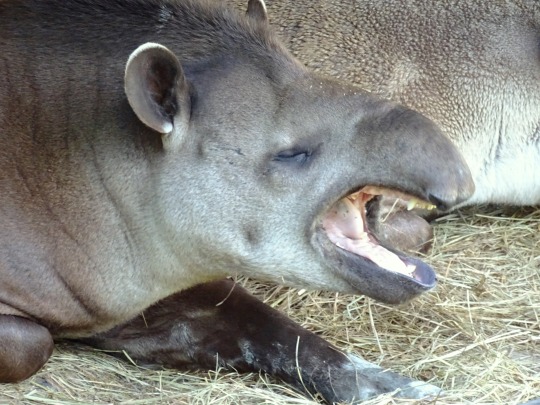

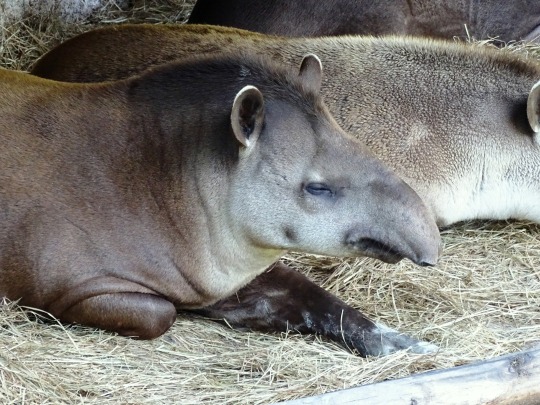

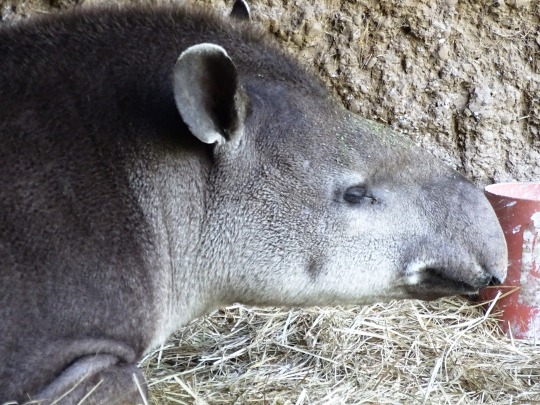
World Tapir Day
Learn about the highly endangered creature known as the tapir, and educate others, volunteer, or donate to help preserve these fascinating mammals.
Let’s dive into the fascinating world of tapirs with World Tapir Day! Celebrated every year on April 27, this day is all about shining a spotlight on these unique creatures. Since its start in 2008, the event has aimed to increase awareness and support for tapir conservation.
Why celebrate tapirs, you ask? Well, many people don’t even know these animals exist. They’re often mistaken for other species, even in places where they naturally live.
Tapirs are crucial for their ecosystems, helping forests grow by spreading seeds. But they’re in danger due to habitat loss and other human activities. World Tapir Day is here to change that by educating people and rallying support for these shy giants.
How can we make a difference? Simple acts like learning more about tapirs, sharing information, and supporting conservation efforts can have a big impact.
You can also donate to organizations working to protect tapir habitats or take part in local events and activities. Together, we can help ensure tapirs thrive for generations to come.
History of World Tapir Day
World Tapir Day is a unique celebration dedicated to raising awareness about tapirs, those curious creatures that have roamed the Earth for millions of years.
This special day was officially launched in 2008 and is celebrated annually on April 27. It wasn’t until 2011, however, that the celebration really took off, thanks to the passionate efforts of tapir enthusiasts and conservationists who recognized the need to highlight these lesser-known animals.
Their goal was to educate the public about the critical role tapirs play in their ecosystems and the threats they face, such as habitat loss and hunting.
The founding of World Tapir Day marked the beginning of a concerted effort to put tapirs on the global conservation agenda.
By drawing attention to their plight, the day aims to inspire actions that help ensure their survival. Zoos, wildlife organizations, and conservation groups around the world participate by hosting events, educational programs, and social media campaigns to spread the word.
Activities range from visiting tapirs at local zoos to engaging in conservation fundraising efforts.
The significance of World Tapir Day has grown over the years, reflecting the increasing urgency of protecting these animals and their habitats. All four recognized species of tapirs are currently listed as vulnerable or endangered.
The day serves as a reminder of the beauty and diversity of wildlife and the importance of conservation efforts to protect our planet’s biodiversity for future generations.
How to Celebrate World Tapir Day
Celebrating World Tapir Day can be both fun and meaningful with a sprinkle of creativity. Here are some playful suggestions that don’t just stick to the script:
Dress Up as a Tapir: Grab some grey or black clothes, fashion a snout, and maybe even some spots and stripes. Walk around your neighborhood or park, sparking curiosity and conversations about tapirs.
Tapir-Themed Art Day: Gather your friends or family and create tapir-inspired artwork. Paint, draw, or even create digital art—let your imagination run wild. Share your masterpieces online to spread the love for these unique creatures.
Movie Night with a Twist: Host a movie night featuring documentaries or films about tapirs and their habitats. It’s a cozy way to learn about these animals and the challenges they face.
“Adopt” a Tapir: Many conservation organizations offer symbolic adoption programs. Adopting a tapir can be a great way to support its protection and learn more about the specific animal.
Tapir Trivia Night: Organize a trivia night with facts about tapirs. It’s a fun way to educate and challenge your friends and family about tapir knowledge.
Visit a Zoo Virtually or In-Person: If you can’t make it to a zoo, many offer virtual tours where you can see tapirs. For those who can visit in person, it’s a great opportunity to learn firsthand about these animals.
Tapir Treats Bake-off: Get creative in the kitchen by baking cookies or cakes shaped like tapirs. Share your creations with friends or on social media to spread awareness in the sweetest way possible.
These ideas make sure the spotlight is on these fascinating creatures and the efforts to conserve them.
Source
#Brazilian tapir#World Tapir Day#WorldTapirDay#27 Apil#animal#daytrip#Zoo Zürich#Zurich#Switzerland#Bronx Zoo#my favorite zoo#New York City#USA#travel#original photography#South American tapir#Malayan tapir#Asian Tapir#close up#head#detail#Schweiz#spring 2018#summer 2018#flora#fauna#nature#vacation#tourist attraction#landmark
1 note
·
View note
Note
Silly Game Time: ASIAN ANIMAL TIME! Use a random letter generator, then look up Asian animals that start with that letter. What's one of them? Post a picture of it!

TAPIR !!
5 notes
·
View notes
Note
Hello! So, I was wondering if you have any thoughts on the Drowzee line, but since they were (very probably) inspired by the Asian tapir, I wanted to ask you about the ones living on South America! I personally wanted to read more about the Brazilian one (hehe they have a lil moecano), but I adore all the others too! Maybe they're regional variants?
There's a variety of regional variants of Drowzee! While the Malayan Drowzee is the most widely-known, there are actually more regional variants in Latin America than in Asia. They're generally smaller than the Malayan counterparts, with the smallest varieties living across the Amazon basin. Their small size, however, masks their potent psychic powers. Living near the water, some have adopted the use of water-type moves, though it still appears that South American Drowzee retain their mono-psychic typing. Another variety, found in the Andes, has adopted a rock-typing from living outside of the rainforest.
17 notes
·
View notes